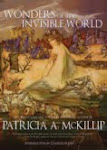
[1]
Trail Length: 4.3 km taking about 3 hours
Elevation Gain: 145 m (470 ft)
Maximum elevation: 1545 m (5,070 ft)
Maps: Banff Up-Close (Gem Trek)
Check
trail and
bear conditions from Parks Canada before setting out. Recently the population of grizzly bears has increased and are more often encountered and seen around the Banff townsite. An article in the
Calgary Herald in August 2013 reported an incident where a very large grizzly bear (225-275 kilogram) killed and ate a small 45-kilogram black bear that had been foraging on the trail.
From the intersection at the south end of the Bow River bridge make a right turn onto Cave Avenue. Go 1.2 km to the parking lot where a paved walkway leads to the
Historic Cave and Basin site. Walk past to get to the hiking and bicycle path.
Some years ago, the paved road to Sundance Canyon was open to vehicular traffic. However, now it is used only by hikers, horses and those who wish to bicycle or use roller blades.
The first portion of the trail leads down to the Bow River.
[2]
For about 1.5 km the trail follows the shoreline of the Bow River before turning south toward Sundance Canyon. Views of Mt. Cory 2789m, Mount Edith 2554m (the spike top), Mt. Norquay 2525m can be seen to the north.
[3]
[4]
[5]
[6]
The trail and bicycle access ends at the Sundance Canyon picnic area. There a 1.2 km foot trail climbs into this canyon, bridging the Sundance Creek, and looping back down the other side of the canyon.
[7]
Just before the trail loops around there is a fork leading off through Sundance Pass to swing around the southern end of Sulphur Mountain to the Spray River for those considering that route.
Photo Credits: [1] melanie CC=nc-flickr, [2][3][4] eric titcombe CC=flickr, [5][6] John Vetterli CC-nc-nd-flickr, [7] casium CC=nc-nd-flickr.
Research: ParksCanada
 [1]
[1]







